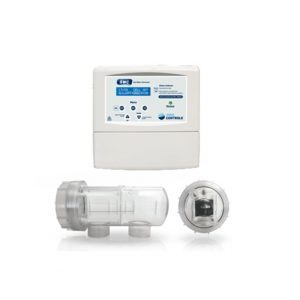When you slow most things down it is quite reasonable to expect that you will save a bit of energy, just think of the difference between running and walking or driving your car more slowly. In most cases a 10% reduction in speed gives you a 10% reduction in energy.
Pool Pumps are different however because they respond to what is known as the “Cube Law”.
When you slow pool pumps the energy saving can be spectacular. As an example, think of how little effort it takes to spin a small hand held fan to get it going and how much harder (you need lots more “torque”) it gets, as the fan speeds up. This is the same for pumps. A pool pump has an impeller which is like a fan and is rotated by its pump’s electric motor to push water through the pool plumbing.
Cube Law Explained
The relationship between the speed and power of a fan or a pump is called the Cube Law and can be built up step by step.
The flow is proportional to the speed of the pump impeller: 10% slower = 90% flow.
The torque or “twisting effort” is proportional to the speed squared
The power is proportional to the speed cubed.
Now 0.8 x 0.8 x 0.8 equals approx. 50% of the power. That is by reducing the flow by just 20%, you can reduce the power consumption by approximately 50%.A reduction of 30% in flow rate can provide a reduction in power consumption of approximately 70%.
A key function of pool water circulation is to ensure that the sanitising agent such as chlorine is well distributed throughout the pool.
For most pools a 30% reduction in flow is perfectly acceptable for normal water filtering and chlorination functions because the water circulation rates it provides is more than adequate when the skimmers and pump strainers are kept clean. In some pools because aspects of the pool design and its plumbing, flow rates may need to be higher. In many pools the flow rate can be reduced to 70% of maximum flow rate for filtering and chlorinating. The flow rate can also be set up to be a function of season with lower circulation rates often being acceptable during the winter period even down to 60% of maximum.
As part of the Pooled service, we install an Intelligent Pool Controller that senses many aspects of the pool, the weather, the water, the cost and price of power, the season and what is going on in the Grid. The controller, not only lowers the speed of your pump, but does it intelligently, speeding up and slowing down as required by the other equipment operating in the pool and other variables. All this further reduces energy use as well as chemical use and gives you a spectacular, healthier pool.
A reduced flow rate also provides a number of other benefits particularly if your pool equipment uses a media or sand filter.
At lower flow rates the filter works more effectively as more material suspended in the water is retained in the filter.
If there is leaf matter or debris in the pool it can be shredded as it passes through the filter into finer material which is returned to the pool. This effect is significantly reduced at lower flow rates.
Reducing the flow rate extends the life of the filter media. The filter media has sharp edges to catch suspended material as it flows through the filter. With time these sharp edges are lost due to the media material being smashed together as the water flows through the filter so filtration becomes less effective and water visual quality is impacted. By extending the life of the filter material, costs are reduced as well as improving the performance of the filtering function.
More effective filtration provides very high quality water which visually is far more appealing for most people.



